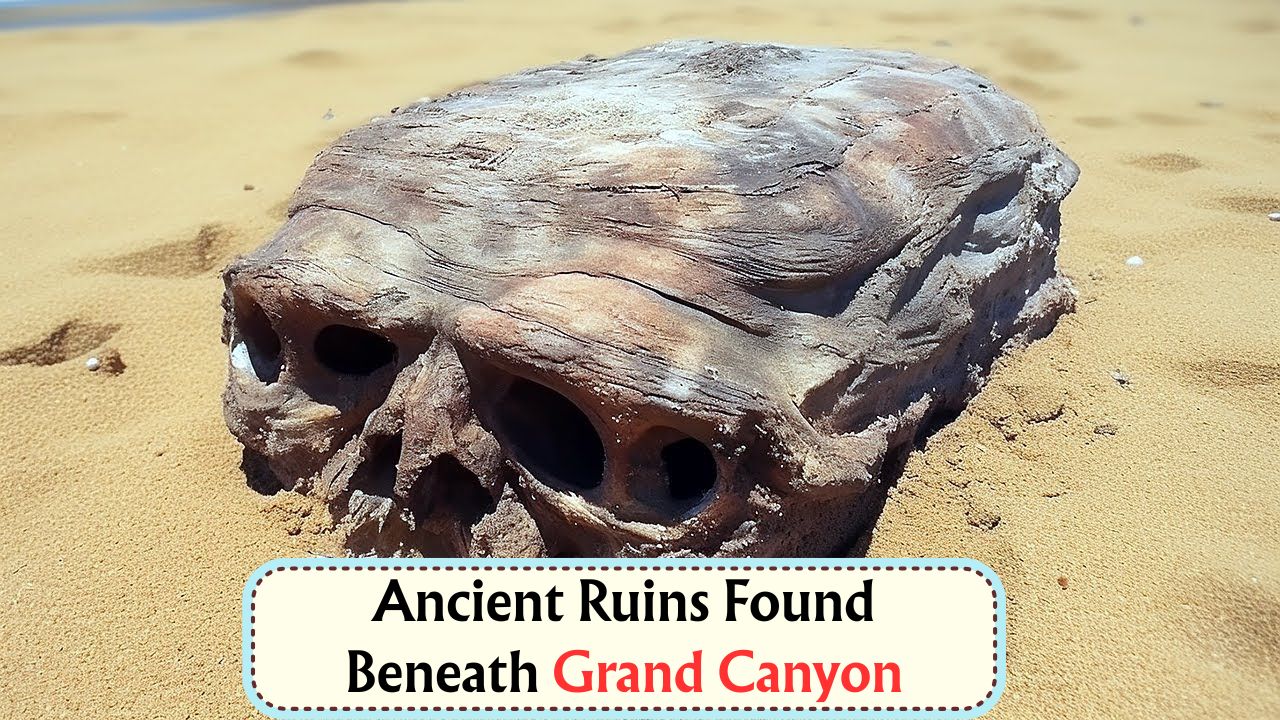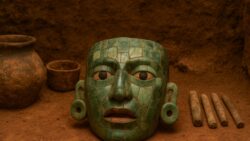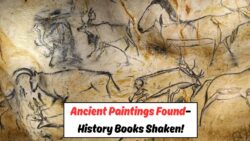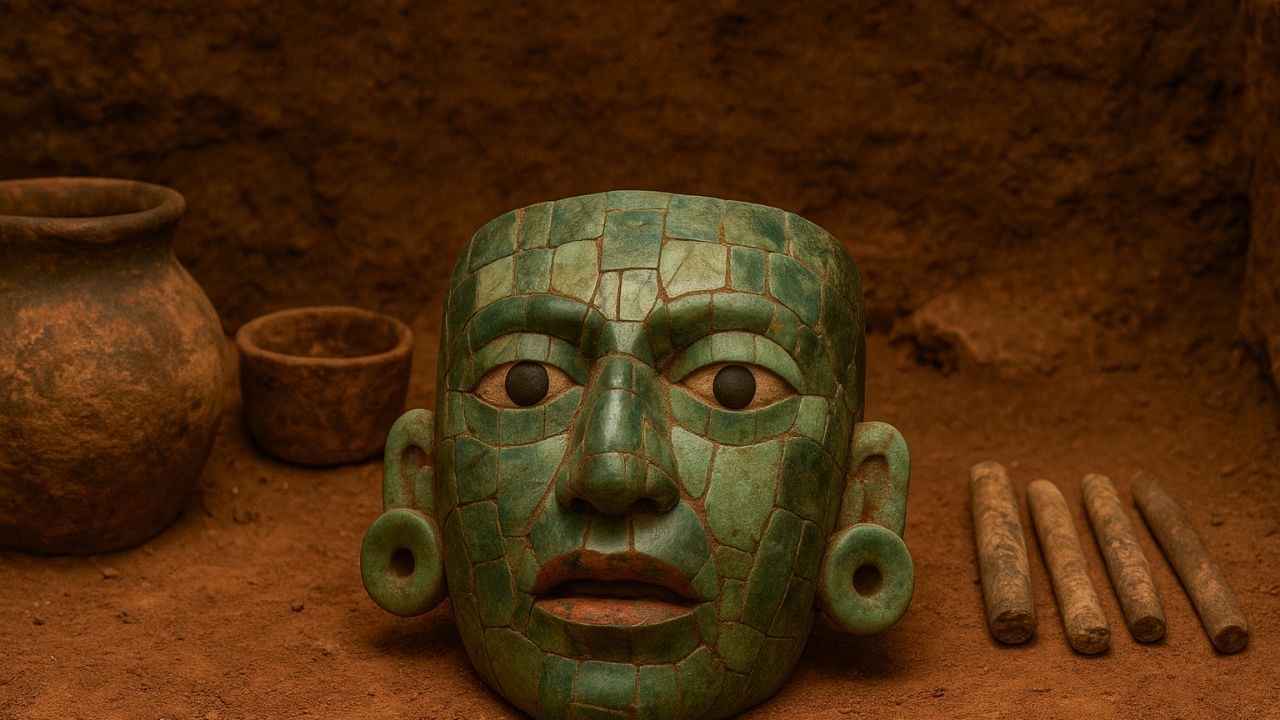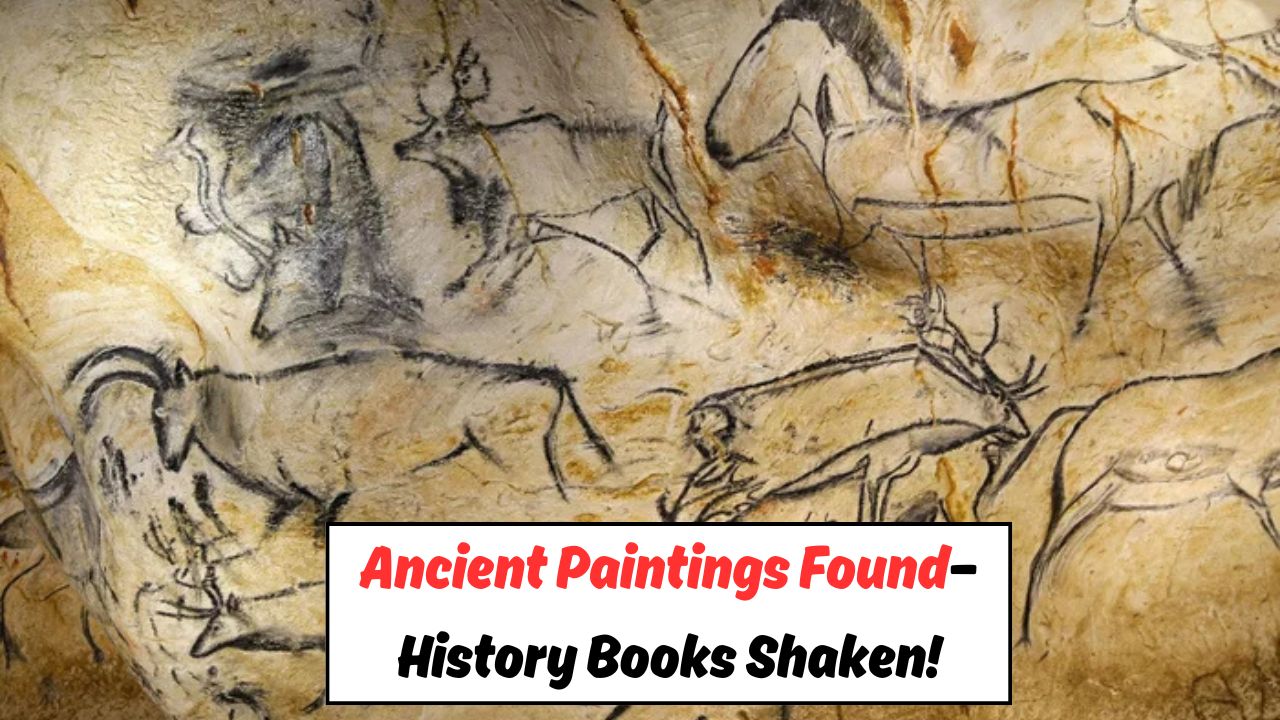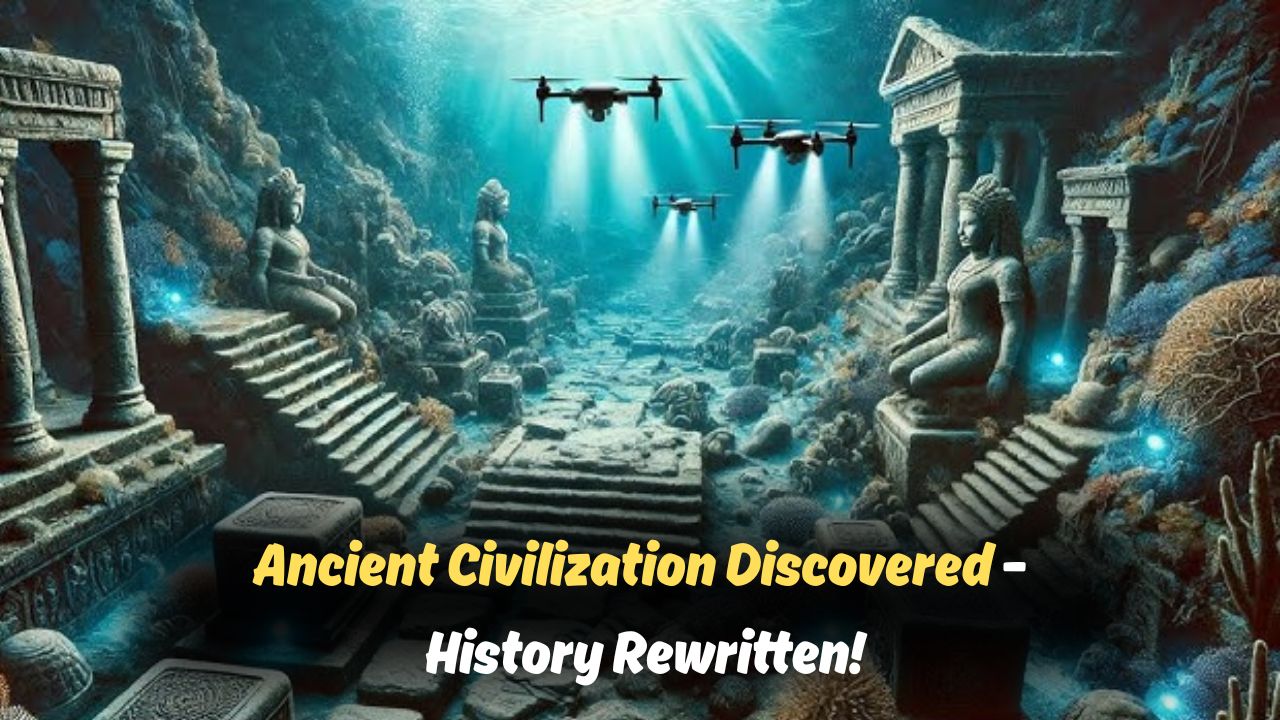Grand Canyon – In a revelation that’s left both historians and conspiracy theorists buzzing, recent reports suggest the discovery of an ancient underground city beneath the Grand Canyon—raising questions that could rewrite American history. The mystery dates back over a century but has resurfaced due to renewed investigations, tantalizing clues, and archaeological findings suggesting that an ancient non-Native civilization may have once lived in the region long before Christopher Columbus arrived in 1492. The story was first popularized in a 1909 Arizona Gazette article describing a Smithsonian-backed expedition into a cave system that allegedly housed artifacts of Egyptian and Tibetan origin. Although officially dismissed as a hoax, no official follow-up was ever confirmed, prompting speculation that the U.S. government may have covered up something truly groundbreaking. Could this be evidence that ancient explorers crossed the oceans and settled in the Americas centuries before Columbus? The implications would be staggering—not just historically but culturally and scientifically. From advanced architecture to hieroglyphic inscriptions and metallic tools, the supposed findings hint at a lost civilization with global connections. With growing interest, researchers, historians, and independent archaeologists are once again digging into this story—literally and figuratively. Here’s a deep dive into the evidence, the theories, and what it all might mean for the history of North America.
Mysterious Cave System Reported by 1909 Expedition
The alleged cave system was said to contain immense chambers, mummies, and unusual artifacts. Its discovery created a sensation in the early 20th century.
- Location: Supposedly in the Marble Canyon region of the Grand Canyon
- Source: 1909 Arizona Gazette article
- Artifacts described: Copper tools, tablets with hieroglyphs, idols resembling deities
- Cave structure: Tunnels stretching for miles, with ventilation shafts
- Mummies: Several found in a sitting position, wrapped in linen
- Theory: Links to ancient Egyptians and Asians
- Reaction: Smithsonian denied involvement, fueling conspiracy
Unverified Smithsonian Involvement Raises Eyebrows
The role of the Smithsonian Institution in the original report has been widely questioned. No records exist of the expedition or any such findings in official archives.
- Lead explorer mentioned: “G.E. Kincaid”
- Smithsonian denials: No record of Kincaid or the expedition
- Independent inquiries: Met with silence or vague responses
- Foia requests: Returned no information
- Allegation: Smithsonian may have destroyed evidence to maintain historical narrative
- Public interest: Thousands of researchers have called for an official investigation
- Credibility issues: Critics cite lack of physical proof
Theories About the Cave’s Origins and Builders
Despite the official silence, various theories have emerged about who built the underground complex and why.
- Ancient Egyptians: Based on artifact design and hieroglyphic writing
- Tibetan influence: Statues resembling Eastern deities and spiritual relics
- Pre-Columbian transoceanic contact: Suggests ancient sea routes existed
- Native American legends: Hopi and Zuni tribes speak of subterranean ancestors
- Phoenician sailors: Known to travel extensively in antiquity
- Lost civilization: Possibly older than both Egyptian and Mesopotamian cultures
Comparing Alleged Artifacts with Global Ancient Relics
There are reported similarities between the items described and ancient artifacts found in other parts of the world. Here’s how they line up:
| Artifact Type | Described in Cave | Similar Finds | Origin Region | Estimated Age | Material Used | Symbolic Meaning |
|---|---|---|---|---|---|---|
| Copper Tools | Yes | Middle Eastern Dig Sites | Egypt, Mesopotamia | 3000+ years | Copper, Bronze | Everyday usage, trade |
| Idols | Yes | Asian and Egyptian Temples | India, Egypt | 2000–5000 years | Stone, Gold | Religious, spiritual figures |
| Tablets | Hieroglyphs | Egyptian Tombs | Ancient Egypt | 4000 years | Clay, Stone | Communication, ritual |
| Linen Mummification | Described as present | Egypt | Ancient Egypt | 3000 years | Linen | Burial practice |
| Architecture | Large tunnel systems | Petra, Jordan | Middle East | 2000+ years | Carved stone | City planning, safety |
Could This Rewrite American History?
The discovery—if proven authentic—would change how we understand American settlement and global migration patterns.
- Pre-Columbian contacts: Would prove that others reached America before Columbus
- Cultural influence: Could explain unexplained similarities in symbols and myths
- Academic resistance: Institutions hesitant to revise history
- Public pressure: Growing demand for independent investigations
- Impact on Indigenous narratives: Must be handled with cultural sensitivity
- Global implications: Would suggest ancient intercontinental travel was common
Timeline of Alleged Discovery Events and Related Developments
| Year | Event | Status |
|---|---|---|
| 1909 | Arizona Gazette reports underground city discovery | Published |
| 1910s | Smithsonian denies involvement or knowledge | Unverified |
| 1970s | Fringe researchers revive story | Theorized |
| 1990s | Books and documentaries explore possibilities | Popularized |
| 2000s | Online communities demand full investigation | Growing support |
| 2020s | Alternative archaeologists report nearby anomalies | Ongoing research |
The Grand Canyon’s “No Fly Zone” Mystery
An intriguing aspect of the theory is the restricted airspace over the Grand Canyon where the alleged cave entrance lies.
- FAA “no-fly zone”: Covers part of the canyon near Marble Canyon
- Military airspace: Nearby zones reportedly used for secret operations
- Speculation: Cave entrance being protected or hidden
- National Park policies: Public barred from exploring some canyon areas
- No official explanation: Raises more suspicion
- Reported witnesses: Hikers claim being turned away by armed personnel
Role of Native American Oral Histories
Native American tribes like the Hopi and Zuni have passed down stories that eerily resemble aspects of this mystery.
- Hopi: Speak of underground dwellers called “Ant People”
- Zuni: Legends of sacred caves and spirit ancestors
- Navajo: Tales of forbidden areas in the canyon
- Common themes: Sacred caves, ancient travelers, spiritual protectors
- Could align with: Cave discovery reports from 1909
- Cultural sensitivity: Some tribes oppose publicizing sacred stories
Underground Cities in Global Cultures
Subterranean cities aren’t unique to this story—many civilizations around the world have similar histories.
- Derinkuyu (Turkey): Multi-level underground city, ancient Christians
- Ellora Caves (India): Temple complex carved into rock
- Petra (Jordan): Rock-cut architecture similar to Grand Canyon description
- South America: Tunnels in Peru and Bolivia associated with Inca myths
- Egypt: Supposed tunnels under Sphinx and pyramids
- North America: Missouri and Kentucky contain large cave systems
- Conclusion: Underground living may have been more common than assumed
Calls for Transparency and Archaeological Review
Many believe that a full-scale excavation and transparent reporting would provide the truth.
- Independent expeditions: Frequently blocked by authorities
- Academic pushback: Labeled as pseudoscience
- Potential benefits: Tourism, historical clarity, cultural knowledge
- Legal complications: Protected federal lands and Native rights
- Technological tools: Lidar, sonar, and ground-penetrating radar can help
- Public petitions: Growing demands for official reexamination
Comparison of Mainstream vs. Fringe Interpretations
| Aspect | Mainstream View | Fringe Theory |
|---|---|---|
| 1909 Gazette Article | Fictional or exaggerated | Based on suppressed facts |
| Smithsonian Role | Non-existent or unrelated | Deliberate cover-up of discovery |
| Artifacts Description | Improbable, inconsistent | Matches global ancient cultures |
| Native American Stories | Mythological, not literal | Echoes actual events and locations |
| No-fly Zone | Environmental or safety reasons | Used to hide underground sites |
| Cave Location | Untraceable, possibly misreported | Hidden deliberately or misdirected |
Whether truth, exaggeration, or elaborate myth, the story of a hidden civilization beneath the Grand Canyon continues to captivate the world. While mainstream historians may call it fantasy, the possibility that ancient travelers reached America long before Columbus is an idea too powerful for many to ignore. Until definitive evidence surfaces, the canyon may continue to hold secrets that challenge everything we thought we knew about our past.
Frequently Asked Questions
Q1: Was there really an ancient city discovered beneath the Grand Canyon?
A: There is no official proof, but the 1909 article and continued reports keep the theory alive.
Q2: Did the Smithsonian cover up the findings?
A: The Smithsonian denies all involvement, but conspiracy theories suggest otherwise.
Q3: What kind of artifacts were allegedly found?
A: Descriptions include copper tools, tablets with hieroglyphs, idols, and mummified bodies.
Q4: Are Native American legends connected to this story?
A: Many oral traditions describe underground beings and sacred caves, which some believe align with the cave story.
Q5: Can anyone visit the alleged site?
A: No. The region is part of a restricted area in the Grand Canyon and is off-limits to the public.
Q6: Why is this story still popular today?
A: It challenges mainstream history, and people are fascinated by ancient mysteries and possible government cover-ups.
Q7: Has any new evidence emerged recently?
A: No physical evidence has been publicly confirmed, but interest continues through documentaries, books, and online research.
